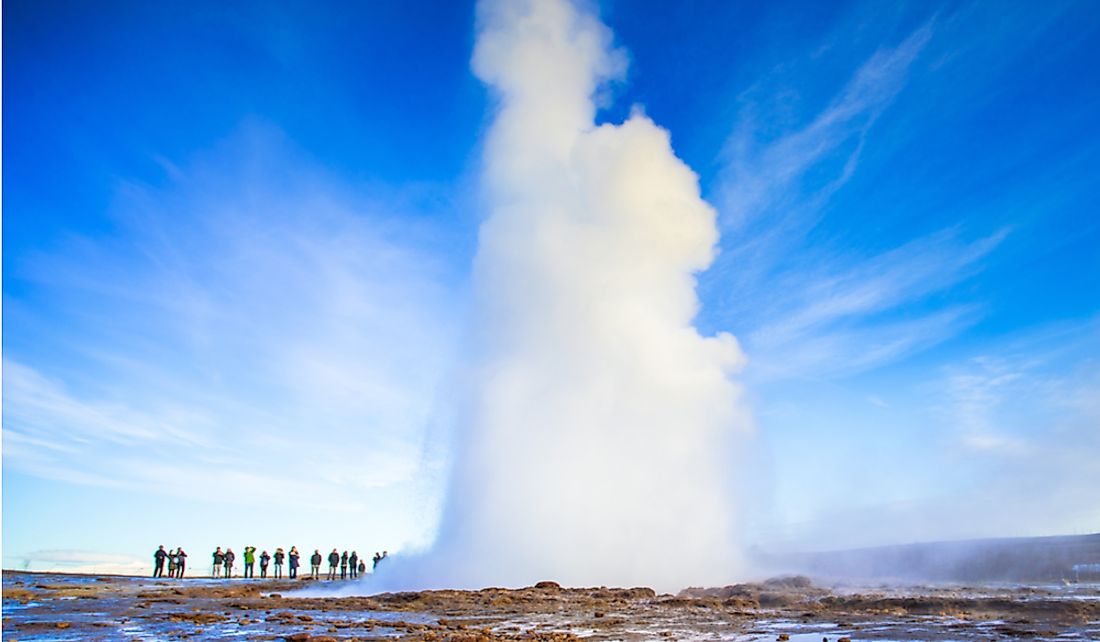What Are The Biggest Industries In Iceland?

Iceland is an island country covering an area of approximately 40,000 square miles in the North Atlantic Ocean. With a population of about 359,000 inhabitants, Iceland is Europe’s most sparsely populated country. The majority of the population live in Reykjavik, the country’s largest and capital city. The island of Iceland is geologically and volcanically active whose interior consist of mountains, lava fields, and glaciers. Some of the major industries in Iceland include tourism, fisheries, hydropower generation, agriculture, and manufacturing.
Understanding the Economy of Iceland
Iceland has a small economy that is subject to high volatility. It can be described as a mixed economy with both elements of influence from the government and free trade. In 2011, the country’s GDP was US$ 12 billion, but this had more than doubled by 2017 (US$ 24 billion). From 2008 to 2010, Iceland, like most countries, faced a period of the financial crisis, leading to a decline in GDP and employment rate. However, the tourist book of 2010 helped to reserve this situation. After a period of robust growth, the economy of Iceland is slowing down. Despite the slow growth, the economy is expected to continue growing as more industries emerge in the country.
Tourism Industry
Tourism played a significant role in the revival of Iceland’s economy, following the global financial crisis of 2008 to 2010. The tourism boom that started in 2010 continued into the following years and accounted for over 10% of the GDP in 2017. The tourism industry has grown considerably in economic significance, and the number of tourists visiting the country has also increased, surpassing the 2 million mark in 2017. This industry is responsible for about 42% of the total export revenue (2017). The majority of the tourists to Iceland (42%) arrive during summer months (June to August) with most tourists drawn from South and Central Europe. The most frequently visited destinations in Iceland include the Capital Region, Strokkur Geyser, Vik, Blue Lagoon, and Skogar. In October 2014, the tourism industry employed about 27,000 people.
Agriculture Industry
For centuries, the leading industries in Iceland were agriculture, forestry, and fishing. In the 19th century, about 80% of the Icelanders depended on agriculture as a source of food and income. However, over the years, there has been a steady decline in the number of people involved in farming to about 5% of the total population. The numbers are expected to continue falling as other industries such as tourism and manufacturing continue to grow. Arable land is a valuable natural resource in Iceland. However, since the country’s terrain is mainly rugged and mountainous, the size of arable land is significantly limited. Only 1.2% of Iceland’s territory is considered arable land, most of which is confined to the lowland areas. Carrots, potatoes, cabbages, turnips, kale, and bananas are some of the food crops grown in the country. Livestock rearing is increasing rapidly in Iceland, with farmers keeping a wide variety of animals such as goats, sheep, and cattle.
Fishery Industry
Fisheries were once the most crucial part of the economy of Iceland (now replaced by tourism), accounting for about 27% of the GDP in 2011. According to the labor department, the industry accounts for about 5% of the total labor force of which 4,900 are involved in fishing, and another 4,000 are involved in fish processing. However, it is estimated that about 25,000 or 20% of the labor force depends on fisheries and related sectors. Most of the jobs are provided by the companies that manufacture fisheries equipment or companies that are engaged in processing marine products. Importantly, Iceland is one of the biggest fisheries nations in the North East Pacific (second after Norway). The most important species of fish harvested in Iceland is cod, with an average catch of 150,000 tons every year.
Manufacturing Industry
Iceland has a growing manufacturing industry, mainly boosted by the hydropower generation. It has the largest electricity production per capita in the world. The abundant electrical power is as a result of the large scale availability of hydroelectric and geothermal energy sources. Hydropower is the main source of industrial and home electrical supply in the country and has played a significant role in the growth and development of the manufacturing sector. The biggest components of the manufacturing industry are the power-intensive industries which mainly produce export products. The manufacturing industry accounts for 35% of all export goods, a 13% increase from 22% in 1997.
Aluminum Industry
Aluminum smelting is the largest power-intensive industry in Iceland. In 2013, there were three smelting plants in the country, operating at a capacity of 800,000 metric tons per year, making Iceland the 11th largest producer of aluminum in the world. The first plant was is the Rio Tinto Alcan in Straumsvik which has been operating since 1969 and has a capacity of 189,000 metric tons per year. The other plant is operated by Noroural, a subsidiary of Century Aluminum. Another plant is located in Reyoarfjorour and is run by Alco, a US-based aluminum manufacturing company.
Service Industry
Although tourism is the largest service Industry in Iceland, the banking sector also plays a significant role in promoting the country’s economy. The collapse of the banking sector during the global financial crisis led to an unprecedented economic crisis in the country. However, the sector has been completely overhauled with only three major banks currently in operation. The smaller banks have been consolidated or acquired by these bigger banks. The three major commercial banks include Arion Bank, NBI, and Islandsbanki. Since the founding of Iceland Stock Exchange in 1985, the equity markets have also greatly developed.











